My original “real hip experience” began in October, 2011. I fell while ice skating, landing directly and abruptly on my right hip, resulting in a hairline fracture in the neck of the femur – a classic hip fracture, even if the fall was not the most common type. As I progressed through my recovery I wrote a series of posts, including two instances in which my doctors (surgeon or his PA, physician’s assistant) figuratively showed me a stop sign as an indication that I was trying to do too much too soon. Once they explained that my risk of too much activity was a re-fracture, or later a stress fracture, I immediately cut back my activities per their instructions. During the 3-night hospitalization I had told everyone who treated me that I had just completed a (walking) marathon and I wanted to be capable of doing another one sometime after my recovery. The last post was written a little over 11 months after my injury, and I proudly declared “I’m all better now.” Indeed, by that time I had completed two half marathons since the injury.
In this post I want to describe, in summary fashion, the active lifestyle I was grateful to be able to return to, and to enjoy for several years. I also want to acknowledge that I began to develop limitations resulting from the 2011 injury, and I want to describe how those limitations affected me – and how I persevered as well as I could, for as long as I could. Although I didn’t mention this in the previous set of posts, my surgeon had told me that there was a chance I would develop arthritis in the injured/pinned hip. I have decided to call it PTOA, post traumatic osteoarthritis, since the injury is considered to be a trauma. In general, if there is no traumatic injury involved, when a person develops OA in one hip it is frequently followed – if not accompanied – by OA in the other hip. In my case, because of my fracture, only one hip has been involved.
My active lifestyle has included four main areas: power walking, ice skating, wildflower hikes (or botanizing), and hiking and backpacking. In each area I have experienced several years of activities comparable to, or even exceeding, my pre-injury levels, followed by limitations and coping.
Power walking: As I mentioned above, I had told everyone who treated my fracture that I hoped to be able to complete another full marathon at some point after my recovery was complete. In addition, I was keeping track of my times for all timed events I entered: full marathons, a few 10k’s, annual half marathons, and Bay to Breakers (a 12k event). I have all of this data in a spreadsheet. I didn’t keep track of 5k’s.
I did complete one full marathon after my hip fracture, my third. It was the same event (Nike Women’s Marathon in San Francisco) as the one right before my injury, so the same route, two years later. I trained diligently for it and was thrilled to finish in 5:54:42 (hr:min:sec), setting a new personal record (PR) by almost 6 1/2 minutes. This is the last full marathon I have done and, in all likelihood, I won’t do another. The training is really quite demanding.
I have done 13 half marathons, according to my spreadsheet. Although one was overseas (Dublin, Ireland, in 2014) the rest were local, mostly the San Jose Rock and Roll (SJ RnR) half marathon. My best half marathon time was the 2014 SJ RnR, with a per-mile time about 30 seconds faster than my full marathon PR. The next year I bailed and did the 10k, since I had just returned from a month of hiking in Europe and I thought I might be jet-lagged. After that I started to slow down, and by 2017 my time had increased by about 5 minutes. I haven’t done any half marathons since then; again, the training and event are fairly demanding on a deteriorating hip.
My 10k events were mostly Turkey Trots along a similar route to the SJ RnR events. My fastest time per mile for any timed event was the 2016 Turkey Trot. In 2018 and 2019 I backed off to doing the 5k distance, and was progressively slower.
The last type of timed event I did several times was Bay to Breakers (B2B), which is about 12k. I participated in 11 B2B events, right up through 2019 (May). My fastest time was in 2016, and by 2019 I had added a whopping 15 minutes to my PR time. This is a really clear indication that my OA was becoming a significant limitation, particularly for power walking.
Every time I have done a timed event I have tried to train and prepare as well as possible, and to walk as well (and fast) as my body would let me on that particular day. And I knew that it wasn’t just age, but rather my hip, that was slowing me down.
Wildflower hikes and botanizing: Some of my wildflower hikes were, from an exercise point of view, just regular hikes with the added pleasure of finding and photographing wildflowers. I began to notice, and get more interested in, native wildflowers around 2014. Since then I’ve enjoyed wildflowers wherever I’ve hiked: in California, other states, and overseas. I’ve taken several memorable wildflower-inspired road trips, including Death Valley, Anza-Borrego Desert State Park, Mojave National Preserve, and Joshua Tree National Park, most of the above for the spring blooms.
Some botanizing adventures involve relatively little walking or hiking, but more exercise getting down on my knees or sitting on the ground to take flower pictures. I gradually learned that I needed to be more deliberate – and selective – about getting down and up repeatedly in a single day.
Ice skating: I have skated for over 35 years and have experienced the positive challenges of learning new skills – and trying to maintain them – both as an individual skater and in groups. When I broke my hip I had an enforced 6-month absence from the ice. And when my surgeon ok’d me to skate again, with the admonishment to “be careful” (which meant to avoid falling), I was ecstatic. I have worn a special garment, informally known as crash pads, every time I have skated since then.
A few years ago my Dull Blades group was retired, but I continued with a weekly group class emphasizing skills. Gradually, and especially in the last couple of years, it became more difficult for me to maintain skills. I would attribute much of this decline to age – and lack of sufficient practice! – but some could be attributed to advancing arthritis. At some point, as my range of motion decreased, I privately acknowledged that if I ever reached the point where I was unable to put my skates on and lace them myself, I would have to stop skating.
Hiking and backpacking: I have had many wonderful and memorable hiking experiences since my hip fracture. Some of the most memorable were overseas hiking trips: Northern Ireland, the Dolomites, Julian Alps, Patagonia, Hong Kong, and Romania. Many of these adventures still await attention in my backlog for this blog.
During these years I hiked about 500 miles of the Pacific Crest Trail (PCT) and began to do some backpacking. In June, 2018, a friend and I did a 25-mile day hike on the PCT, which we referred to as our big-a$$ hike. In August, 2019, we did an 18-mile day hike on the PCT in Oregon, along with nearly 50 miles of backpacking in shorter stints (but carrying 25-plus-pound packs).
A big highlight was climbing Mt Whitney in August, 2016. This was a marathon-length (21 miles, 19 hours) hike with 6,000 feet of elevation gain and loss, to the highest elevation I had yet experienced: 14,505 feet, the highest point in the lower 48 states. After I reached the summit I was so elated that I literally jumped into the air several times while one of my hiking companions took pictures.
But my proudest hiking accomplishment was summiting Mt Kilimanjaro just last June, 2019. It was an 8-day supported and catered trek to the Roof of Africa, at 19,341 feet. While I did have noticeable issues with the elevation, and I did not hike fast, my hip behaved admirably.
I found that hiking was easier on my hip than power walking, so I was able to continue having amazing experiences later in my journey to and through OA. My most recent hiking trip was in Romania, in September, 2019. However, by the time I returned from that trip I had relatively severe limitations.
Growing limitations: As hinted in the above descriptions, I was able to return to and continue an active lifestyle after recovering from the hip fracture. Early in either 2016 or 2017 I mentioned for the first time to my primary care physician (PCP) that I was starting to develop some pain in my right hip. At first she said she thought it was arthritis and gave me some general hip exercises to do. I was diligent for a while but found it difficult to stay the course and continue indefinitely to do physical therapy for up to an hour a day. At a subsequent annual visit, when I mentioned the pain again, she did some range of motion tests and mused that it might actually be bursitis, since I had rather good range of motion – in retrospect, I wonder if that was due to my ongoing level of activity.
At the beginning of 2019 I was recovering from a severe foot injury in my left foot and had been getting PT for that, and my physical therapist pointed out that when I favored my left foot I was transferring poor body mechanics to my right hip, thereby aggravating the hip. At my 2019 annual visit with my PCP, when we reviewed the situation again, she told me directly that I had OA in the hip, and would potentially need a hip replacement at some point.
Of course I kept this in mind as I completed my preparations for a very busy summer: the Kilimanjaro trip, 2-plus weeks hiking and backpacking in Oregon, and a hiking trip to Romania. As mentioned, the Kilimanjaro trek went well (and was amazing!). In Oregon I had an accident and sprained my left ankle, so I had to cut short the backpacking and some more planned hiking. When I left for Romania I thought the ankle was sufficiently healed, but I really struggled during the trip. I even skipped altogether one day of hiking – something I’d never done before.
By the time I got home I was in pretty bad shape: I could barely get dressed; going up or down stairs was treacherous; and getting in and out of my car was painful. But the worst was sitting down onto the toilet. More than once in Romania I was concerned that I was going to end up on the floor if I mis-aimed my buttocks.
It was time to take action. The next post describes the next stage of my journey.


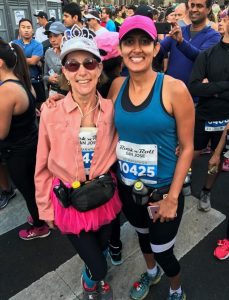
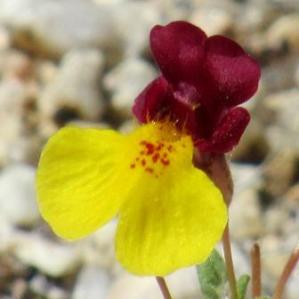
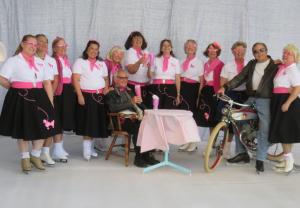
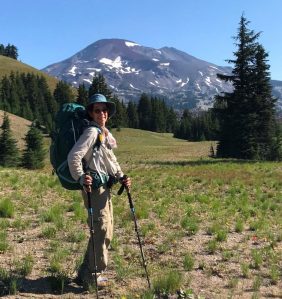
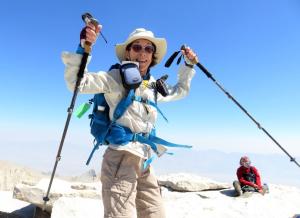
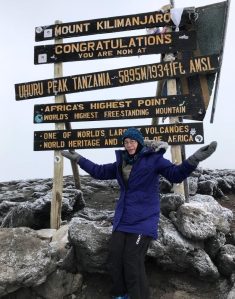
Pingback: “You’re Ready Now” | trailhiker
Pingback: Light at the End of the Pain Tunnel: Surgery and Initial Recovery | trailhiker
Pingback: Algodones Dunes exploration | trailhiker